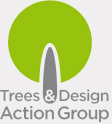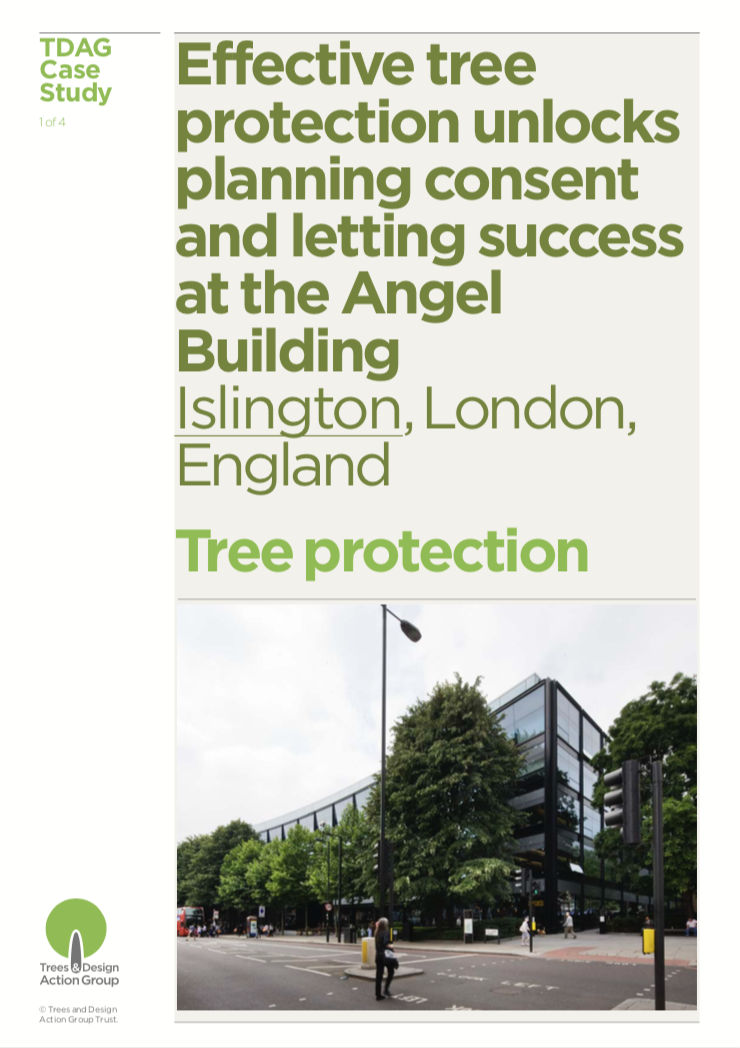| The Angel Building, a 260,000sqft office development by Derwent in Clerkenwell, in central London, was completed in 2010. In spite of a poor economic climate, two thirds of the building was let before completion, and full occupancy was reached very soon after opening. For Johanna Gibbons, landscape architect for the project, “there is no doubt that the environmental quality afforded through the successful retention of mature trees all around the building was a key differentiator for this infill development. A tree constraints plan was developed early and became a primary driver for the design. The curved building façade on St John Street was positioned and shaped in response to the location of the root protection area. The strategy was to retain groups of trees, primarily limes (Tillia spp.) and Caucasian wingnuts (Pterocarya fraxinifolia), at the corner of the project so as to create a microclimate facilitating building ventilation and energy conservation as well as the establishment of new tree and soft landscape around the scheme. |
Philip Wood, then tree officer for the council, emphasises that “monitoring, and monitoring of the monitoring” were critical to the project success. Soil compaction testing using a penetrometer was conducted before works started, mid-way through and after project completion to check that ground protection measures were effective. As Philip explains “this showed that no significant changes had occurred in soil compaction in the RPA where the council had allowed for incursions to occur – but if deterioration had been detected, this approach would have enabled us to take corrective action”. Further to this, the TPP required the tree consultant to submit monthly reports with photographs. Council officers had allocated time to review the reports, ask questions when needed, and conduct some site visits. This not only ensured the TPP was thoroughly adhered to, but also allowed for day-to-day issues to find easy (tree friendly) resolutions.
The new London plane trees (Platanus x hispanica) planted in front of the building entrance were ordered well in advance and hand-picked from the supplying nursery. To ensure good integration with existing bus traffic on St John Street, the specification required that a five-metre clear stem be achieved at least 18 months prior to planting. Below-ground conditions were optimised by integrating arboricultural advice prior to locating the main utility corridor – so as to retain an adequate rooting area for the new trees.
| Project team: | Derwent London (Client). Allford Hall Monaghan Morris (Architect), J & L Gibbons (Landscape Architect), Jonathan Cocking Associates (Arboricultural consultant), Tim O’Hare Associates (Soil consultant), BAM Construction (Main contractor). Local Authority: London Borough of Islington. |
| Completion date: | October 2010 |
| Further information: |
|
| Download: |
| ||
| Version: | This case study was originally published in Trees in Hard Landscapes: A Guide for Delivery (2014). Version 1.1 above was released in February 2018. |
| Author(s): | This case study was drafted by Anne Jaluzot, based on interviews with Johanna Gibbons (Landscape Architect, J & L Gibbons) and Philip Wood (Planning Tree Officer, London Borough of Islington). |


 RSS Feed
RSS Feed